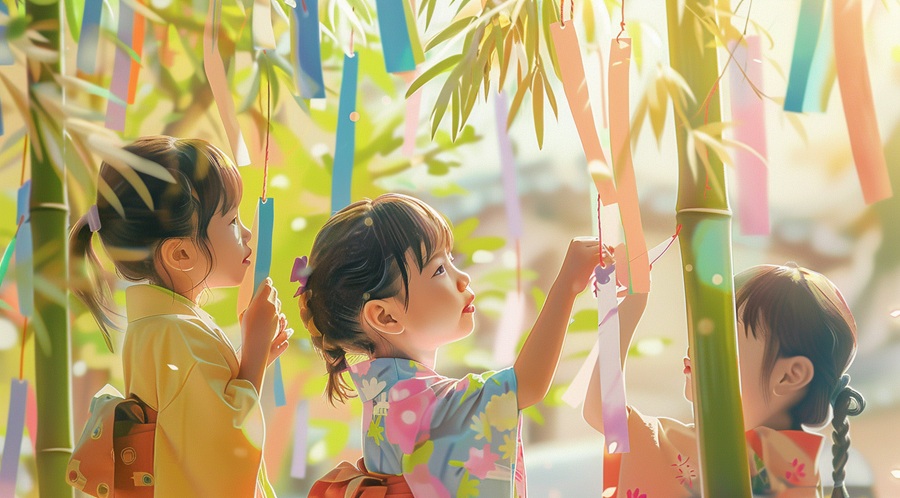
Tanabata
Japanese Name
たなばた
tanabata
Description
- Tanabata, also known as the Star Festival, is a Japanese festival celebrated on July 7th. It commemorates the legendary meeting of two stars, Orihime (Vega) and Hikoboshi (Altair), who are lovers separated by the Milky Way and allowed to meet only once a year. People celebrate by writing wishes on colorful strips of paper called tanzaku and hanging them on bamboo branches. Decorations often include paper ornaments shaped like cranes, nets, or stars, symbolizing good luck, success, and happiness. Festivals include parades, fireworks, and street decorations, especially in cities like Sendai. The event combines both joyous celebration and a reflective connection to dreams and hopes. Children often participate, creating a lively, family-oriented atmosphere.
History
- Tanabata originated from the Chinese Qixi Festival, introduced to Japan during the Heian period (794–1185). Initially, it was a festival for the nobility, centered on weaving and craft rituals in honor of Orihime, a goddess of weaving. Over time, it merged with local Japanese customs and folk beliefs, evolving into a popular festival for all social classes. The tradition of writing wishes on tanzaku became common during the Edo period (1603–1868). Bamboo was chosen as the wish tree because it grows straight and strong, symbolizing resilience and growth. Today, Tanabata reflects both cultural heritage and modern festive creativity, blending traditional symbolism with lively community celebrations.
Learn more Japanese words?
Play our free typing game and master Hiragana & Vocabulary in a Zen atmosphere. 🍵
🎮 Play Game